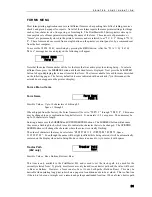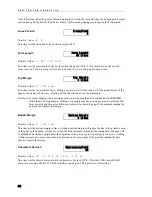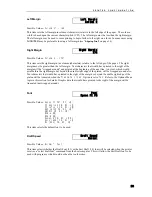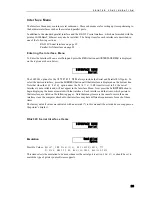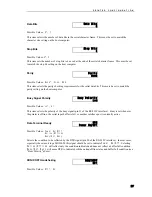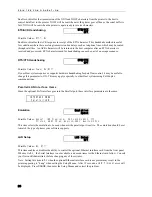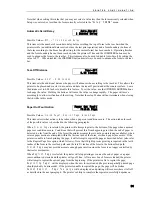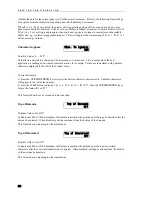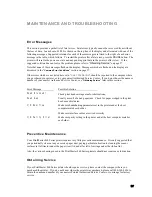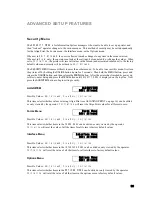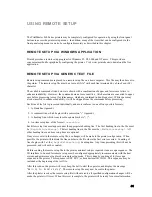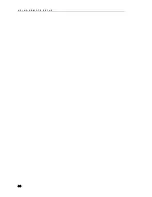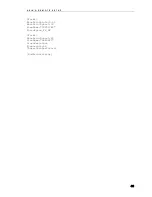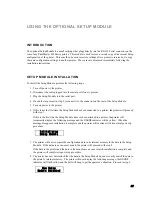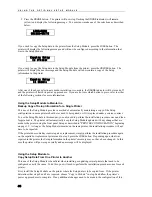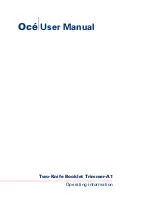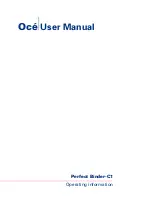
FORM CONSTRUCTION AND LAYOUT TIPS
Form Construction
Although the PrintMaster 860 Series printers have been designed to handle difficult forms, you may come
across a form that does not feed reliably or provide adequate print quality on all copies.
One of the main causes of paper misfeeds is a form that is “tented”. Tenting is a tent-like bulge at the
perforation when forms are unfolded from the box. The printer allows a maximum form thickness of 0.025
inches, which a badly tented form may exceed.
Tenting is usually caused by glue drying on the perforation after the forms maker puts the forms into the
box, or forms which are not glued at all. Forms with solid glue lines, which run vertically down the entire
form, are the most susceptible. If you experience such a problem, request “interrupted glue line” forms
from your vendor. This method stops the glue approximately three-quarters of the way down the form and
then resumes gluing at the top of the next form. The gluing should not begin too far below the top of the
form or pages of the form will be able to fan apart and be a potential cause of jamming.
Another area where not all forms are alike is in the quality of carbon paper used, or in the way carbonless
inks are applied. If the back copies of your form are too light, request a quick-release carbon or a higher
quality carbonless inking method.
Form Layout Considerations
When designing preprinted forms, the most common problem is forms that are designed “too tight”. This
means that boxes where data have to be printed are just barely large enough for the data, and that even the
slightest misalignment will cause characters to be printed on at least one of the lines that form the box.
While the print alignment can be adjusted on the PrintMaster 860 Series printer to 1/100
th
of an inch, this is
often too much to expect of the forms manufacturer. Where the preprinted information is placed in respect
to the tractor holes on the form often varies on every other form in a single box of forms, or from one box
of forms to the next.
To help avoid this situation, create larger areas for data by allocating blank lines in the printed data for
horizontal lines, and allocating blank columns for vertical lines. If this is not possible due to the amount of
data that has to be placed on the form, avoid using a dark color to form the preprinted lines and boxes. Use
a lighter color, preferably other than a gray that will allow the printed characters to still be read if
misalignment occurs.
35
Summary of Contents for PrintMaster 860
Page 4: ......
Page 8: ......
Page 42: ......
Page 44: ......
Page 46: ......
Page 50: ...U S I N G R E M O T E S E T U P 44...
Page 52: ......
Page 56: ......
Page 58: ......
Page 65: ...ASCII CHARACTER TABLES Epson FX Font Character Set PC Font Character Set 59...
Page 67: ...A S C I I C H A R A C T E R T A B L E S OCR A Font Character Set OCR B Font Character Set 61...
Page 68: ...A S C I I C H A R A C T E R T A B L E S ML Euro 858 ML 850 62...
Page 72: ......
Page 75: ...69...

